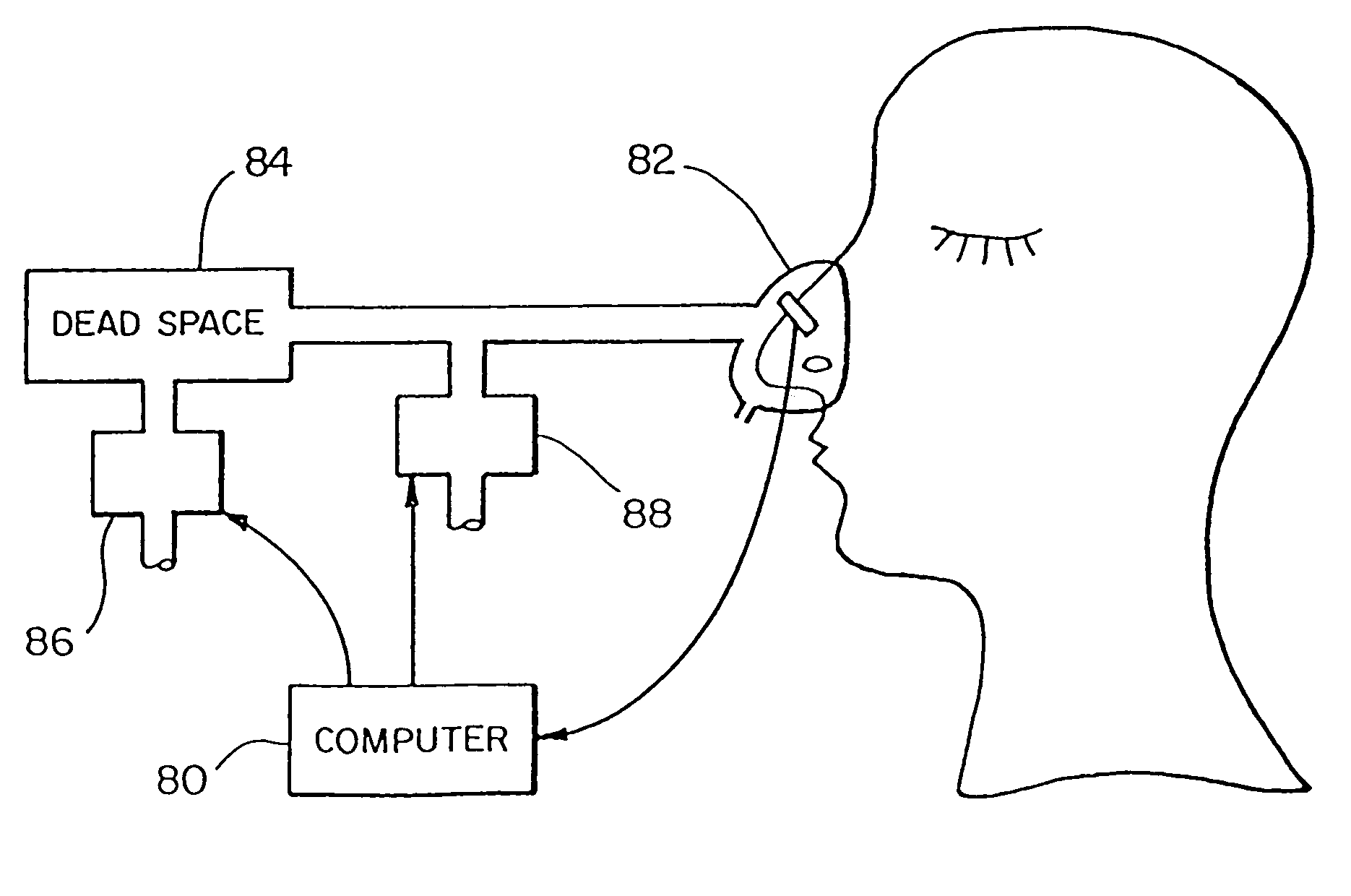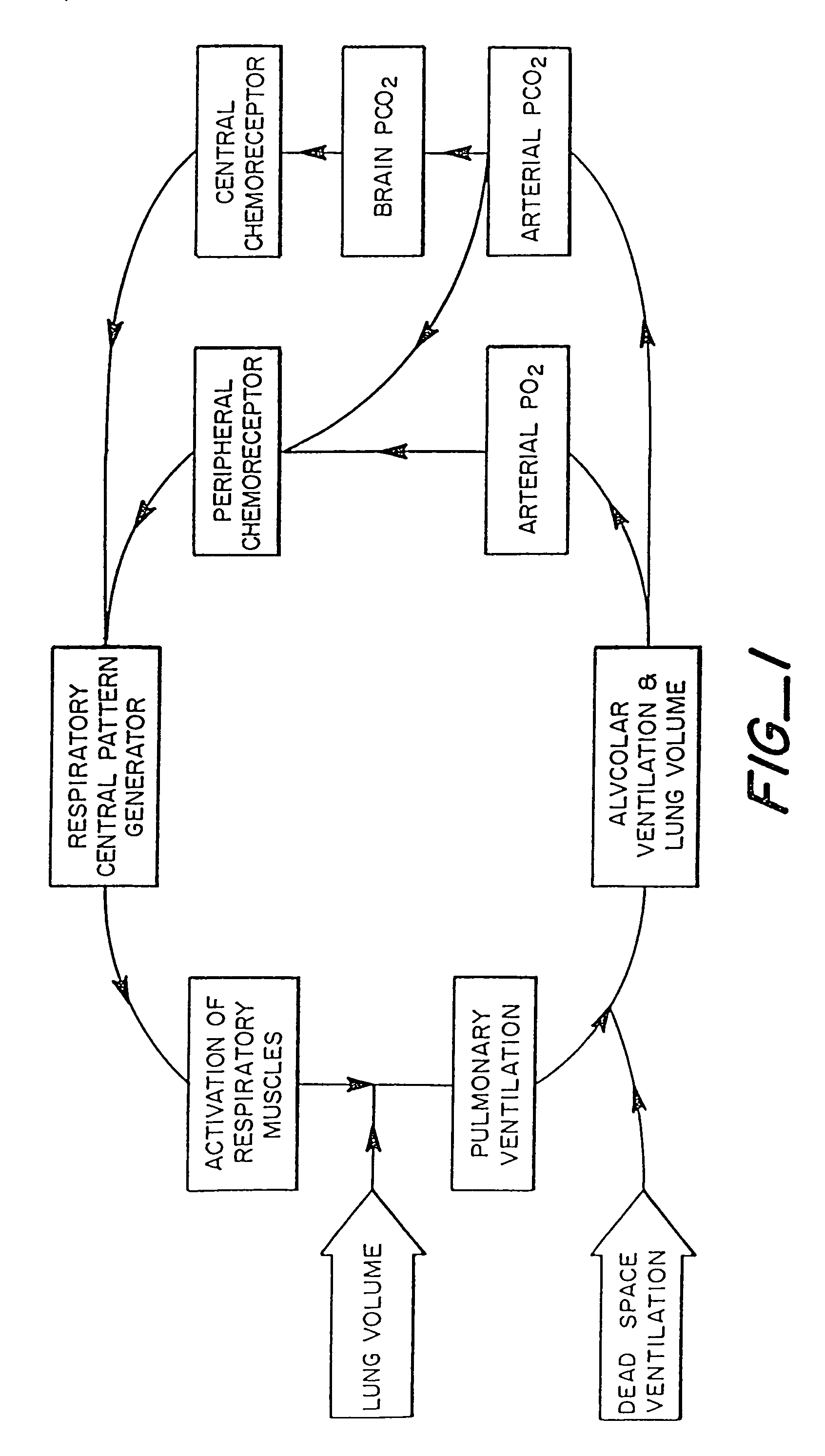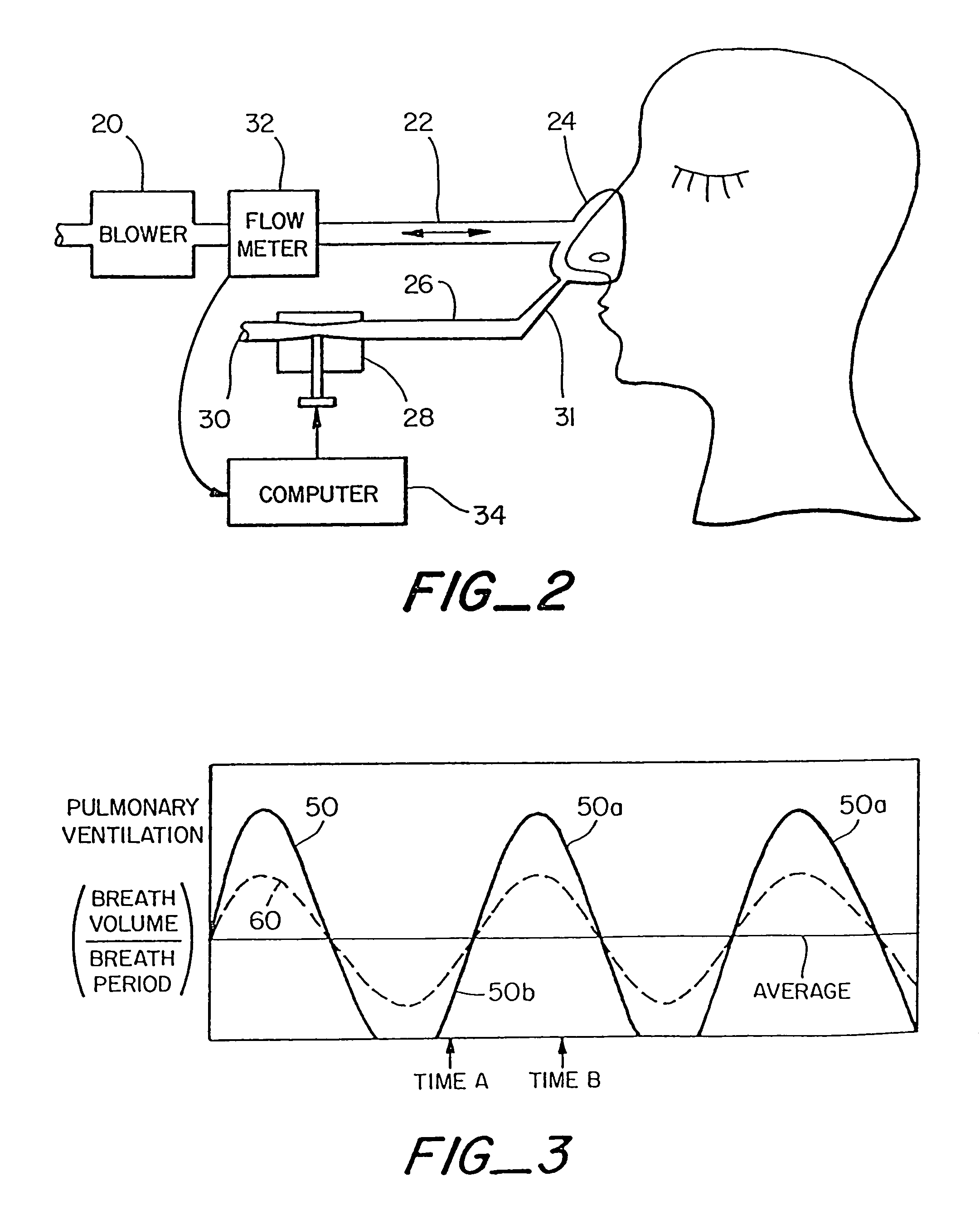Ventilatory stabilization technology
a technology of ventilator and stabilizing device, which is applied in the direction of valves, mechanical devices, operating means/releasing devices, etc., can solve the problems of increasing system efficiency, stabilizing system, and decreasing loop gain, so as to increase breathing, reduce gas pressure from the blower, and increase breathing
- Summary
- Abstract
- Description
- Claims
- Application Information
AI Technical Summary
Benefits of technology
Problems solved by technology
Method used
Image
Examples
Embodiment Construction
[0040]FIG. 2 is a diagram illustrating the rebreathing apparatus of one active control embodiment of the present invention. In this embodiment, a continuous positive airway pressure apparatus including blower 20, tube 22 and patient interface 24 is used. Patient interface 24, for example a mask or oral interface, preferably produces an airtight tight seal to the face for use in the continuous positive airway pressure treatment. A discussion of continuous positive airway pressure and a preferred continuous positive airway pressure apparatus is described in Remmers, et al. U.S. Pat. No. 5,645,053, “Auto-CPAP Systems and Method for Preventing Patient Disturbance Using Airflow Profile Information.” In conventional CPAP, a blower is used to maintain a relatively high constant pressure in a mask and to provide a bias flow of fresh air from the blower out the mask.
[0041]In one embodiment of the present invention, tube 26 is connected to the exhaust port 31 of the patient interface and cond...
PUM
 Login to View More
Login to View More Abstract
Description
Claims
Application Information
 Login to View More
Login to View More - R&D
- Intellectual Property
- Life Sciences
- Materials
- Tech Scout
- Unparalleled Data Quality
- Higher Quality Content
- 60% Fewer Hallucinations
Browse by: Latest US Patents, China's latest patents, Technical Efficacy Thesaurus, Application Domain, Technology Topic, Popular Technical Reports.
© 2025 PatSnap. All rights reserved.Legal|Privacy policy|Modern Slavery Act Transparency Statement|Sitemap|About US| Contact US: help@patsnap.com



